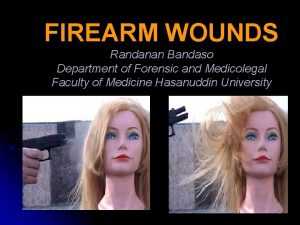Forensic Hair Analysis 101713 Hair as a Tool







- Slides: 7

Forensic Hair Analysis 10/17/13

Hair as a Tool of Forensic Science • Human hair is one of the most frequently found pieces of evidence at a crime scene and can provides a substantive link between the criminal and victim. • Hair is a valuable evidence because it does not breakdown as rapidly as most other human tissues or body fluids. Hair remains intact long after other types of personal evidence have become useless

Characteristics and Morphology of Hair • Hair covers a major portion of the bodies of most people. At a given time, some of these hairs are in growing (anagen) phase, while others are at rest (catagen) or dying (telogen). Growing head hair lengthens as much as 0. 5 mm per day, or approximately one-half inch per month.

Characteristics and Morphology of Hair • Human hair, and the hair of all mammals, grows from the hair follicle, a pore-like organ within the skin. In gross structure, hair is made up of two distinct parts. The SHAFT of the hair projects from the skin, and it is this portion that we readily see. • The ROOT, which is embedded in the follicle, lies below the epidermis, well within the dermal layer of the skin. The root of a mature hair is similar

continues In appearance to a flower bulb. Other species may show different root types, and these are often used to determine the species of origin. In cross section, the hair shaft is seen to be comprised of three distinct layers. It is the variations within these three layers that the forensic examiner notes in comparing human hair.

continues • The outermost layer of the hair shaft is the CUTICLE, made up of layers of SCALES which cover the hair shaft. Examination of these scale patterns plays an important role in determining species and is also used in the basic scale patterns—coronal, spinous, and umbricate---

Research questions • Pull up article from website school. cengage. com/forensicscience • Look up Alec Jeffreys • Read article use links to obtain more information to questions Dr. Jeffreys applied DNA fingerprinting to paternity testing and forensics. Write a short report describing a case investigated by Dr. Jeffreys. How has forensics changed as a result of development of DNA fingerprinting.













